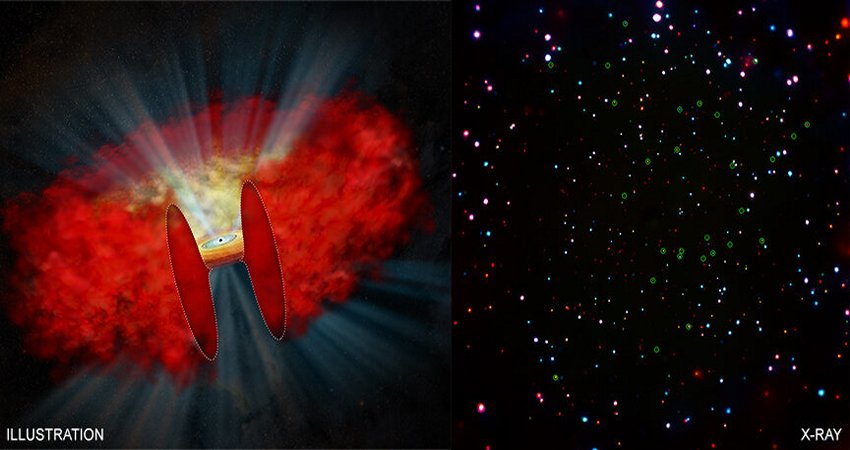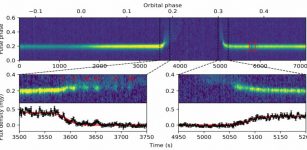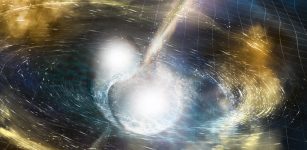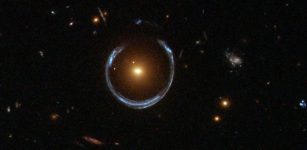‘Heavily Obscured’ And Misidentified Black Holes – Discovered
Eddie Gonzales Jr. – MessageToEagle.com – A new type of growing supermassive black hole masquerading as another has been discovered by astronomers using data from several powerful telescopes.
The misidentified black holes are from a survey known as the Chandra Deep Field-South (CDF-S), the deepest X-ray image ever taken.
 Credit: X-ray: NASA/CXC/Penn State/B.Luo et al; Illustration: NASA/CXC/M. Weiss
Credit: X-ray: NASA/CXC/Penn State/B.Luo et al; Illustration: NASA/CXC/M. Weiss
Supermassive black holes grow by pulling in the surrounding material, which is heated and produces radiation at a wide range of wavelengths including X-rays. Many astronomers think this growth includes a phase, which happened billions of years ago when a dense cocoon of dust and gas covers most black holes. These cocoons of material are the fuel source that enables the black hole to grow and generate radiation.
This type of growing black hole is notoriously difficult to find, but during the latest study, astronomers looked at black holes located 5 billion light-years or more away from Earth.
At these distances, scientists had already found 67 heavily obscured, growing black holes with both X-ray and infrared data in the CDF-S. In this latest study, the authors identified another 28.
“With our new identifications we’ve found a bunch of heavily obscured black holes that had previously been missed,” said Erini Lambrides of Johns Hopkins University (JHU) in Baltimore, Maryland, who led the study. “We like to say we found these giant black holes, but they were really there all along.”
These 28 supermassive black holes were previously categorized differently—either as slowly growing black holes with low density or nonexistent cocoons, or as distant galaxies.
Astronomers compared their data with expectations for a typical growing black hole and found a much lower level of X-rays than they expected from 28 sources, which implies that the cocoon around them is about ten times denser than scientists previously estimated for these objects.
Scientists design these models to explain a uniform glow in X-rays across the sky called the “X-ray background,” first discovered in the 1960s. The X-ray background not currently resolved into individual sources is dominated by X-rays with energies above the threshold that Chandra can detect. Heavily obscured black holes are a natural explanation for this unresolved component because lower-energy X-rays are absorbed by the cocoon more than high-energy ones, and therefore are less detectable.
“It’s like the X-ray background is a blurry picture that has been slowly coming into focus for decades,” said co-author Roberto Gilli from the National Institute of Astrophysics (INAF) in Bologna, Italy. “Our work has involved understanding the nature of the objects that have been some of the last to be resolved.”
Written by Eddie Gonzales Jr. – MessageToEagle.com Staff










